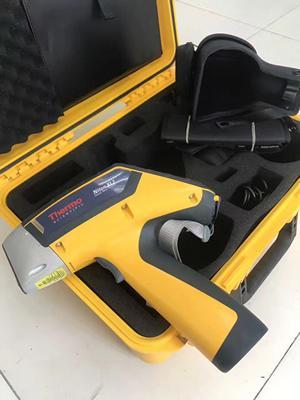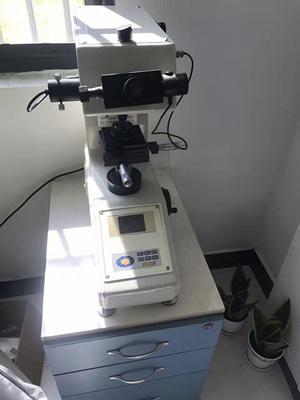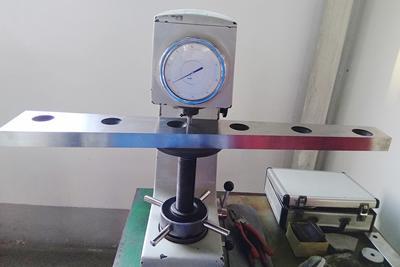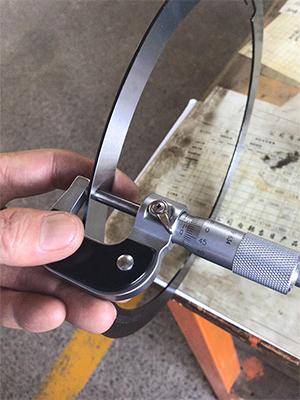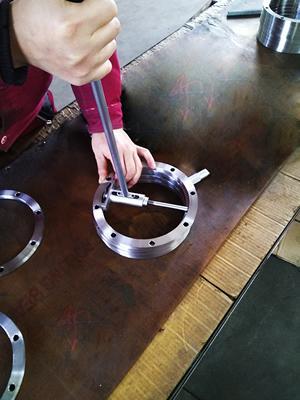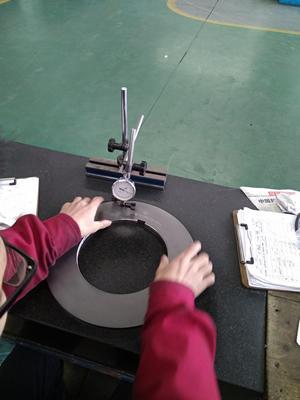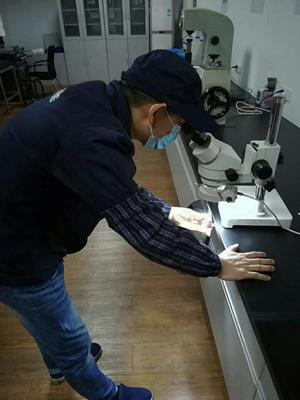- Home
- Custom Made
- Quality Control
Seton has formulated stringent quality management system controlling every product's quality conscientiously and meticulously. Whatever conventional or customized cutting tools, all are strictly manufactured in accordance with customers' drawings or samples standards during production. At the stage of finished products put into warehouse, our company will recheck all indexes of products and issue the testing reports which can be delivered with goods to customers as required.
Raw materials are the most fundamental as well as most important link in mechanical blades production process. Whether high quality materials are chosen or not directly determines whether the quality of mechanical blades is good or not. Seton adopts American Niton handheld spectrometer to conduct fast and efficient analysis and identification of the alloy type and metal composition of the raw materials we purchased. Through stringent control of the quality of raw materials supplied, only qualified raw materials can be put into production of customers' orders, so as to fully meet customers' quality requirements.
The average percentages (Average %) of raw materials and elemental contents Seton generally used are as follows.
Tungsten Carbide (TCT)
| YG20 | YG15 | YG12X | YG10 |
| 80% WC+20%Co | 85% WC+15%Co | 88% WC+12%Co | 90% WC+10%Co |
| C | Cr | Mo | W | Co | V |
| 1.27 | 4.0 | 3.6 | 9.5 | 10.0 | 3.2 |
| C | Cr | Mo | W | V |
| 0.85 | 4.0 | 5.0 | 6.3 | 1.8 |
| C | Cr | Mo | Si | V |
| 0.75 | 7.0 | 2.25 | 0.95 | 1.95 |
| C | Cr | Mo | Si | V |
| 1.55 | 12 | 1.0 | 0.95 | 0.75 |
| C | Cr | Mo | Si | V |
| 1.1 | 17 | 0.75 Max | 0.95 | - |
| C | Cr | Mo | Si | V |
| 0.85 | 17 | 0.75 Max | 0.95 | - |
During the slitting use of mechanical knives, tool steel has a general application hardness of HRC 55-69. High hardness blades are relatively more wearable during use. However, the higher the hardness of blades, the lower the toughness will be relatively. Therefore, it is crucial to choose proper material and hardness of blade when shearing relatively hard materials. For example, in metal cutting, if the hardness of blade is too high, the blade edge will be easily broken. Consequently, it is necessary to carefully choose the hardness and to measure. Rockwell hardness tester is a commonly used instrument for measuring hardness, which is both accurate and efficient.
Considering customers' precision requirements for slitting products, sometimes the thickness tolerance of mechanical blades is within 0.0005mm, such as lithium battery slitting blade, tape slitting blade and circular metal slitter blade. Seton adopt a thickness tolerance measuring instrument with automatic reading function, which can conveniently and efficiently measure the thickness tolerance value of finished mechanical blades, so as to meet the thickness tolerance requirements.
According to the precision requirements of machine shaft and the consideration of facilitating machine operator to assemble knives, it is crucial to choose the tolerance balance of the inner hole of the blade. If the tolerance is too large, as the blade rotates for slitting, the gravity of the blade goes along the shaft and downward, so that for long time slitting the blade is easily to break and not wearable. Seton will design proper inner hole tolerance of blades based on its own experience and machines' precision requirements, or produce as customers' drawings and strictly test the inner hole tolerance by measuring instrument according to the drawings.
The flatness and parallelism of mechanical blades affect the precision of slitting products, and thus the detection of flatness and parallelism is extremely important. Seton has professional quality control group, which can detect the products' flatness and parallelism to ensure customers' requirements are fully satisfied.
The hardness of tungsten carbide blade can reach HRA89-93. Although it is extremely wearable, the tungsten carbide cutting tool has serious brittleness. Consequently, when cutting relatively more hard or products with very high precision, the edge of tungsten carbide blade must be flawless and without cracks. Detecting whether the blade edge has defects and cracks or not by putting the blade edge to a microscope for 200 times enlargement, Seton guarantees each piece of tungsten carbide blade's quality and customers' application requirements met.
Seton adopts two-dimensional detection for the surface and inner hole of the tungsten carbide blade to ensure every piece of blade's surface and inner hole have no defects and cracks. 100% testing enables Seton to offer high quality products for customers.


